Mercedes Vito Bus vs Skoda Kodiaq – Which car suits you better?
Both models have their strengths – but which one suits you more?
Compare performance, efficiency, price and space directly: Mercedes Vito Bus or Skoda Kodiaq?
Costs and Efficiency: Price and efficiency are key factors when choosing a car – and this is often where the real differences emerge.
Mercedes Vito Bus has a minimal advantage in terms of price – it starts at 36300 £, while the Skoda Kodiaq costs 36800 £. That’s a price difference of around 518 £.
Fuel consumption also shows a difference: Skoda Kodiaq manages with 0.40 L and is therefore decisively more efficient than the Mercedes Vito Bus with 6.70 L. The difference is about 6.30 L per 100 km.
As for range, the Mercedes Vito Bus performs decisively better – achieving up to 370 km, about 247 km more than the Skoda Kodiaq.
Engine and Performance: Power, torque and acceleration are the classic benchmarks for car enthusiasts – and here, some clear differences start to show.
When it comes to engine power, the Skoda Kodiaq has a a bit edge – offering 265 HP compared to 237 HP. That’s roughly 28 HP more horsepower.
In terms of top speed, the Skoda Kodiaq performs distinct better – reaching 231 km/h, while the Mercedes Vito Bus tops out at 140 km/h. The difference is around 91 km/h.
There’s also a difference in torque: Mercedes Vito Bus pulls a bit stronger with 500 Nm compared to 400 Nm. That’s about 100 Nm difference.
Space and Everyday Use: Cabin size, boot volume and payload all play a role in everyday practicality. Here, comfort and flexibility make the difference.
Seats: Mercedes Vito Bus offers clearly perceptible more seating capacity – 8 vs 5.
In curb weight, Skoda Kodiaq is clearly perceptible lighter – 1684 kg compared to 2023 kg. The difference is around 339 kg.
In terms of boot space, the Mercedes Vito Bus offers distinct more room – 1390 L compared to 910 L. That’s a difference of about 480 L.
In maximum load capacity, the Mercedes Vito Bus performs convincingly better – up to 4990 L, which is about 2885 L more than the Skoda Kodiaq.
When it comes to payload, Mercedes Vito Bus convincingly takes the win – 1077 kg compared to 545 kg. That’s a difference of about 532 kg.
Who comes out on top?
Overall, the Skoda Kodiaq shows itself to be wins the duel decisively and secures the title of DriveDuel Champion.
It convinces with the more balanced overall package and proves to be the more versatile choice for everyday use.
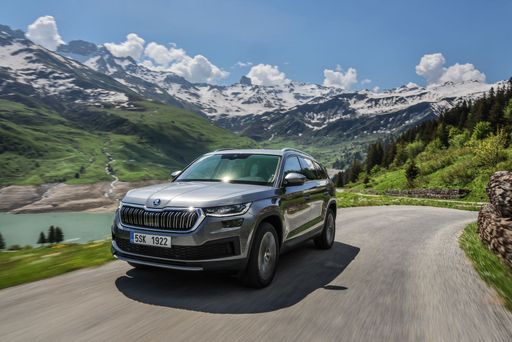
Skoda Kodiaq
Mercedes Vito Bus
The Mercedes-Benz Vito Bus offers a versatile solution for those in need of spacious and comfortable group transportation. Its refined interior is designed to enhance passenger comfort, making it ideal for both business and leisure travel. With a focus on safety and efficiency, it provides a reliable driving experience that aligns with the high standards expected of the Mercedes-Benz brand.
details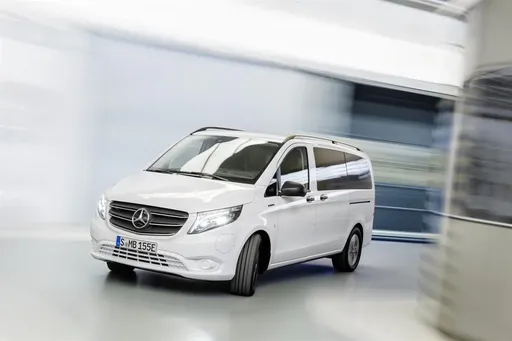
Skoda Kodiaq
The Škoda Kodiaq impresses with its spacious interior and sleek design, making it a popular choice for families and adventurers alike. Equipped with a range of modern features, it offers a comfortable driving experience and outstanding versatility. Its robust build and refined handling make it suitable for both urban settings and countryside escapades.
details @ skoda-media.de
@ skoda-media.de
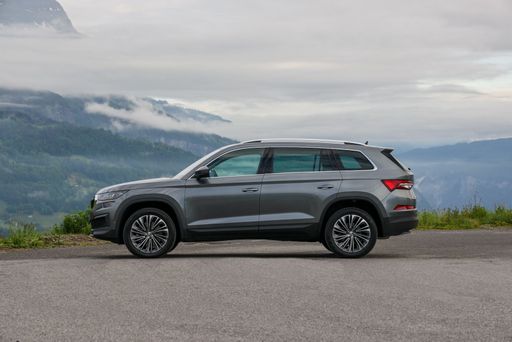 @ skoda-media.de
@ skoda-media.de
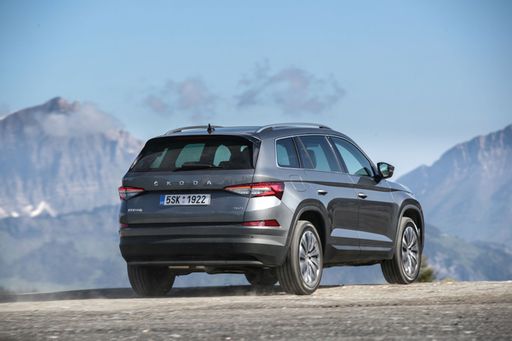 @ skoda-media.de
@ skoda-media.de
 @ skoda-media.de
@ skoda-media.de
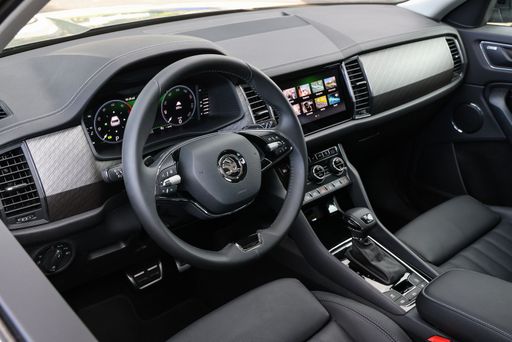 @ skoda-media.de
@ skoda-media.de

|

|
|
|
|
Costs and Consumption |
|
|---|---|
|
Price
36300 - 55900 £
|
Price
36800 - 49600 £
|
|
Consumption L/100km
6.7 - 10 L
|
Consumption L/100km
0.4 - 8.2 L
|
|
Consumption kWh/100km
26.7 - 26.9 kWh
|
Consumption kWh/100km
-
|
|
Electric Range
248 - 370 km
|
Electric Range
113 - 123 km
|
|
Battery Capacity
60 - 90 kWh
|
Battery Capacity
19.70 kWh
|
|
co2
0 - 228 g/km
|
co2
9 - 186 g/km
|
|
Fuel tank capacity
57 - 70 L
|
Fuel tank capacity
45 - 58 L
|
Dimensions and Body |
|
|---|---|
|
Body Type
Bus
|
Body Type
SUV
|
|
Seats
8
|
Seats
5
|
|
Doors
4
|
Doors
5
|
|
Curb weight
2023 - 2739 kg
|
Curb weight
1684 - 1970 kg
|
|
Trunk capacity
580 - 1390 L
|
Trunk capacity
745 - 910 L
|
|
Length
4895 - 5370 mm
|
Length
4758 - 4761 mm
|
|
Width
1928 mm
|
Width
1864 mm
|
|
Height
1890 mm
|
Height
1663 - 1683 mm
|
|
Max trunk capacity
4190 - 4990 L
|
Max trunk capacity
1945 - 2105 L
|
|
Payload
726 - 1077 kg
|
Payload
460 - 545 kg
|
Engine and Performance |
|
|---|---|
|
Engine Type
Diesel, Electric, Petrol
|
Engine Type
Plugin Hybrid, Petrol, Petrol MHEV, Diesel
|
|
Transmission
Automatic
|
Transmission
Automatic
|
|
Transmission Detail
Automatic Gearbox, Reduction Gearbox
|
Transmission Detail
Dual-Clutch Automatic
|
|
Drive Type
Rear-Wheel Drive, All-Wheel Drive, Front-Wheel Drive
|
Drive Type
Front-Wheel Drive, All-Wheel Drive
|
|
Power HP
136 - 237 HP
|
Power HP
150 - 265 HP
|
|
Acceleration 0-100km/h
-
|
Acceleration 0-100km/h
6.3 - 9.7 s
|
|
Max Speed
140 km/h
|
Max Speed
205 - 231 km/h
|
|
Torque
330 - 500 Nm
|
Torque
250 - 400 Nm
|
|
Number of Cylinders
4
|
Number of Cylinders
4
|
|
Power kW
100 - 174 kW
|
Power kW
110 - 195 kW
|
|
Engine capacity
1950 - 1999 cm3
|
Engine capacity
1498 - 1984 cm3
|
General |
|
|---|---|
|
Model Year
2024
|
Model Year
2024 - 2025
|
|
CO2 Efficiency Class
G, A
|
CO2 Efficiency Class
B, F, G, E
|
|
Brand
Mercedes-Benz
|
Brand
Skoda
|
What drive types are available for the Mercedes Vito Bus?
The Mercedes Vito Bus is offered with Rear-Wheel Drive, All-Wheel Drive or Front-Wheel Drive.
The prices and data displayed are estimates based on German list prices and may vary by country. This information is not legally binding.
